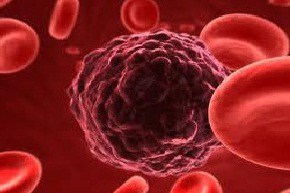To talk of filariasis as such is to use a general term like anemia, for there are seven types of nematodes found in man belonging to the superfamily Filarioidea, as well as one member of the superfamily Dracunculoidea (the guinea worm)which is usually included in a consideration of this group. Depending on the conveyed parasite, filariasis may submit a cardiopulmonary form ( caused by Dirofilaria immitis ) or cutaneous (caused by Dirofilaria repens ).The heart is a disease transmitted by theworm bite of mosquitoes.
Of these Filarioidea, the embryos or microfilariae are found in the blood in five and in the subcutaneous tissues in two species. The adults are viviparous, and the blood microfilariae demonstrate a periodicity in the peripheral blood, depending on the species. They may remain en-sheathed in their elongated egg shell or have no sheath. These microfilariae are distinguished on their criteria as well on as the pattern of distribution of nuclei seen in stained specimens in their tails. Giemsa stain can be used, but better results of sheath staining are obtained with Delafield’s hematoxylin or Mayer’s acid hemalum.
The adult worms live for many years, whereas blood microfilariae have a life of three to six months. After being bitten by an infected arthropod it may take 1 year to 18 months before microfilariae are present in the peripheral blood, a long prepaterit period. The controlling mechanism for periodicity has never been satisfactorily explained for many of these human species. However, Hawking’s recent work suggests that at least two circadian rhythms are involved, one mechanism within the microfilariae themselves, and the other some physiological tide in the host (body temperature for certain animal species).
This periodicity fits the habits of the insect vector; for instance, the Loa insect vector flies by day but most bancrofti infections are transmitted nocturnal iy. The geographic distribution of these species is particular importance, because in some it is markedly restricted. For instance Loa loa is a fiLarid of Equatorial Africa, and Mansonella ozzardi is only found in South America.
Not all the species listed are significantly pathogenic. Few symptoms have been ascribed to Mansonella ozzardi infections, and the case for the pathogenicity of A. perstans is very snaky. Two of these filarial infections are notable in terms of their importance in man. These are the Wucher-eria-Brugia complex, which produces bancroftian filariasis with lymphatic obstruction and elephantiasis, and onchocerciasis, which is a common cause of blindness in endemic areas. Multiple infections occur, in endemic areas, tor instance, in parts of West Africa a patient may be seen infected with Loa loa, bancrofti, perstans. and onchocerciasis.
This final group of the most modified nematodes «be considered in the order in which they are ‘sited in Table 2, except that the guinea worm will be considered first. Dirofilariasis and pulmonary mpical eosinophilia will then be reviewed, fellowed by a note on occult filariasis and the problem of eosinophilia in relation to helminthic disease.

